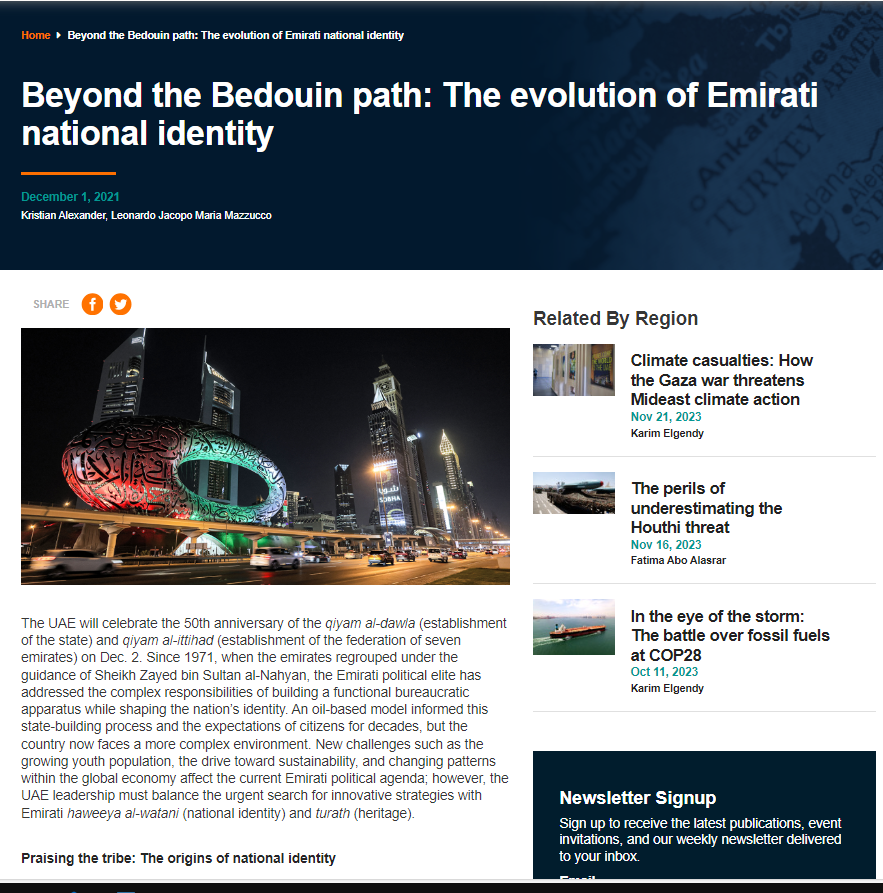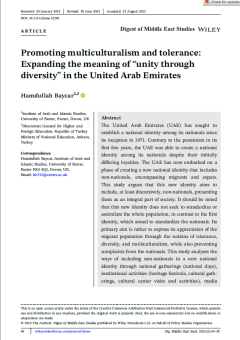The United Arab Emirates (UAE) has sought to establish a national identity among its nationals since its inception in 1971. Contrary to the pessimism in its first few years, the UAE was able to create a national identity among its nationals despite their initially differing loyalties. The UAE has now embarked on a phase of creating a new national identity that includes non-nationals, encompassing migrants and expats. This study argues that this new identity aims to include, at least discursively, non-nationals, presenting them as an integral part of society. It should be noted that this new identity does not seek to standardize or assimilate the whole population, in contrast to the first identity, which aimed to standardize the nationals. Its primary aim is rather to express its appreciation of the migrant population through the notions of tolerance, diversity, and multiculturalism, while also preventing complaints from the nationals. This study analyses the ways of including non-nationals in a new national identity through national gatherings (national days), institutional activities (heritage festivals, cultural gatherings, cultural center visits and activities), media analyses (state-sponsored media), and foreign policy initiatives that emerged (or presented) due to domestic diversity, such as Pope’s visit.





